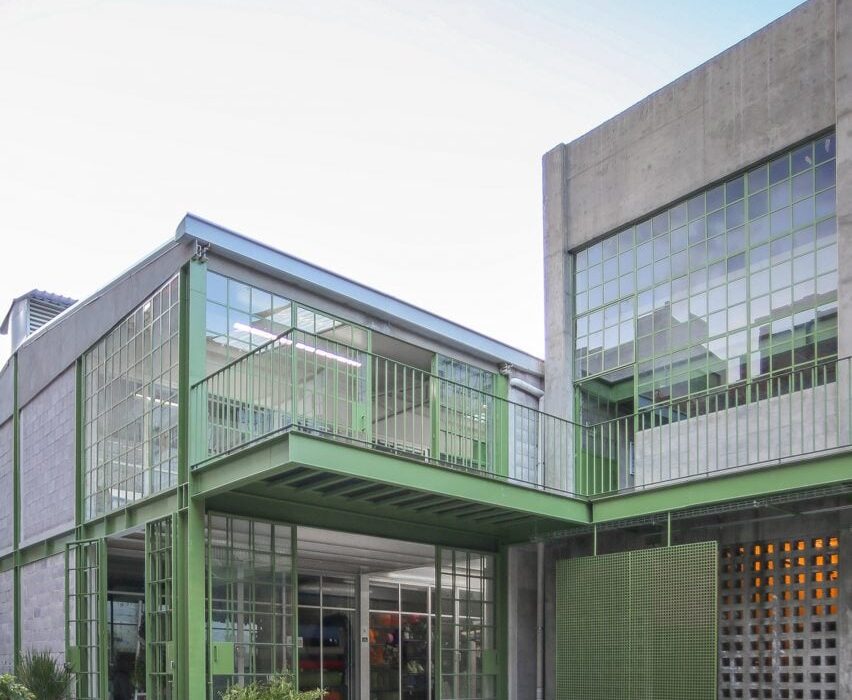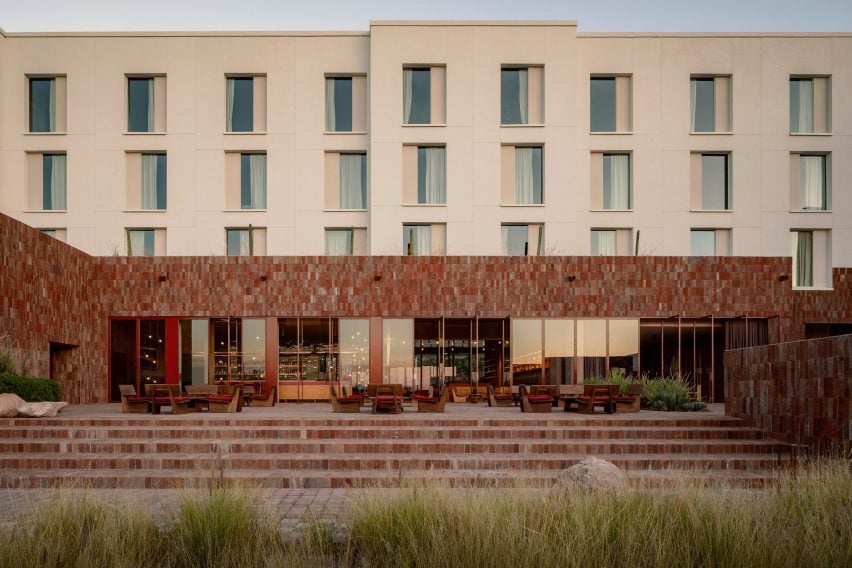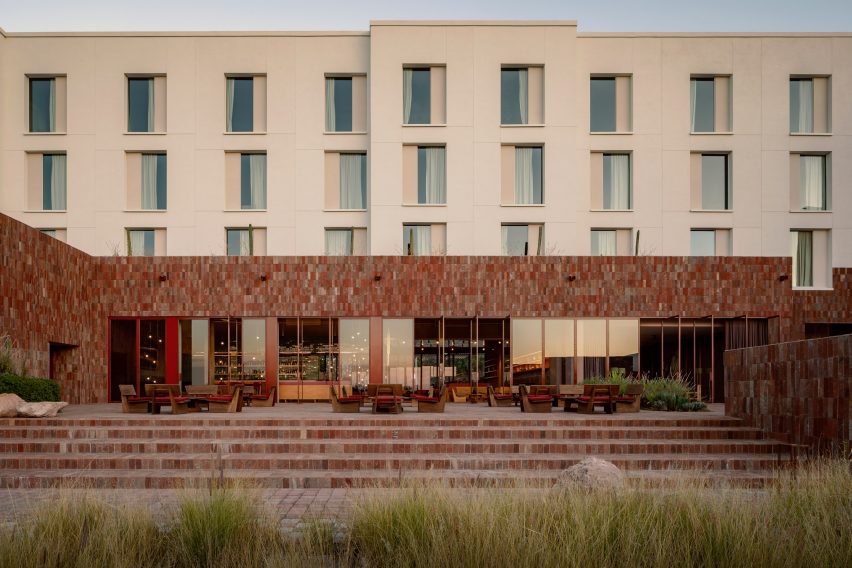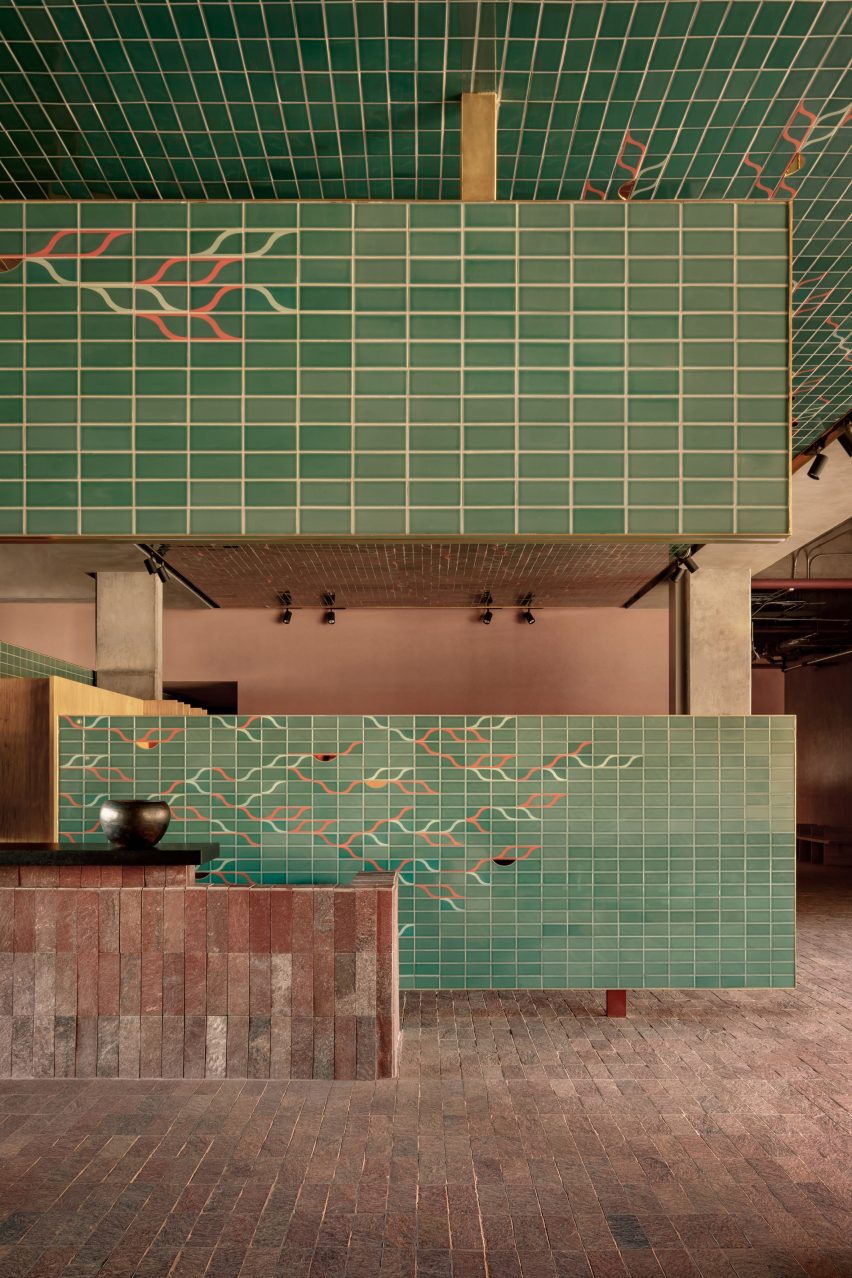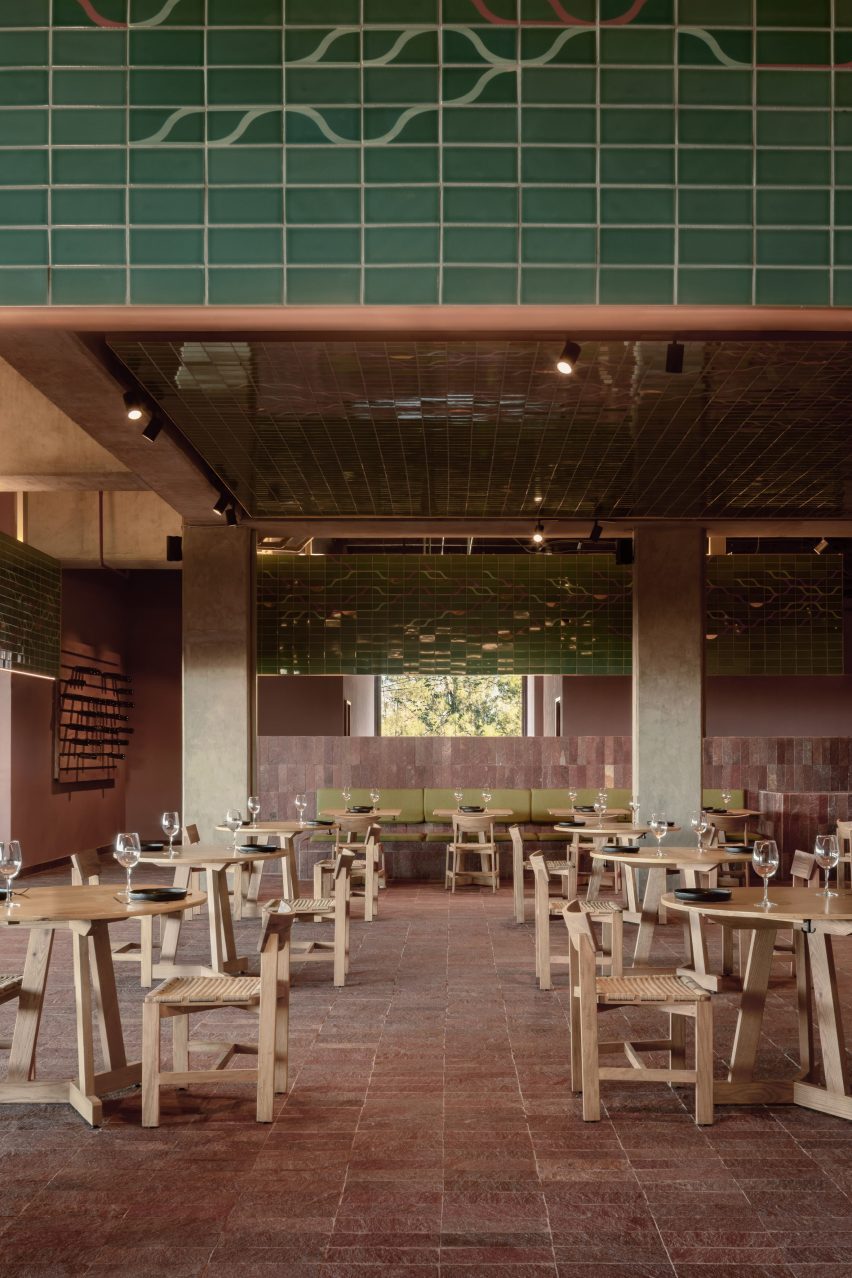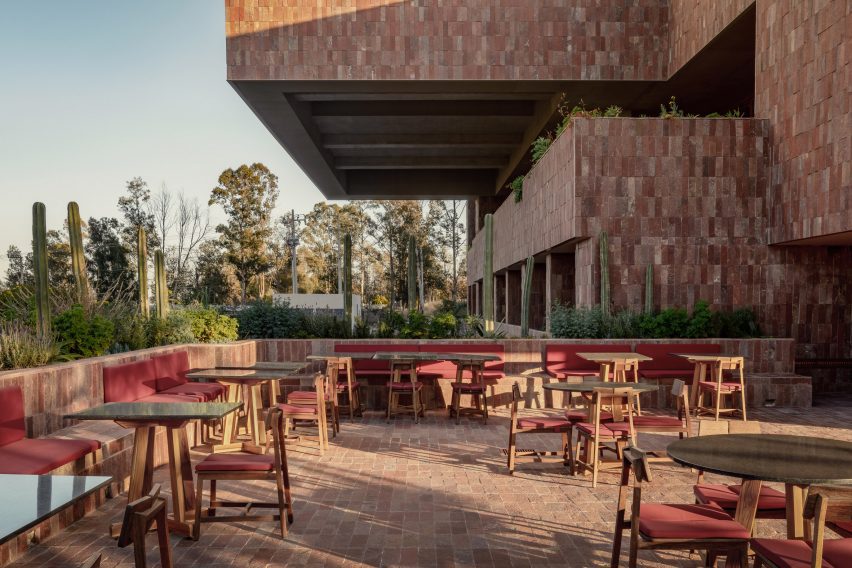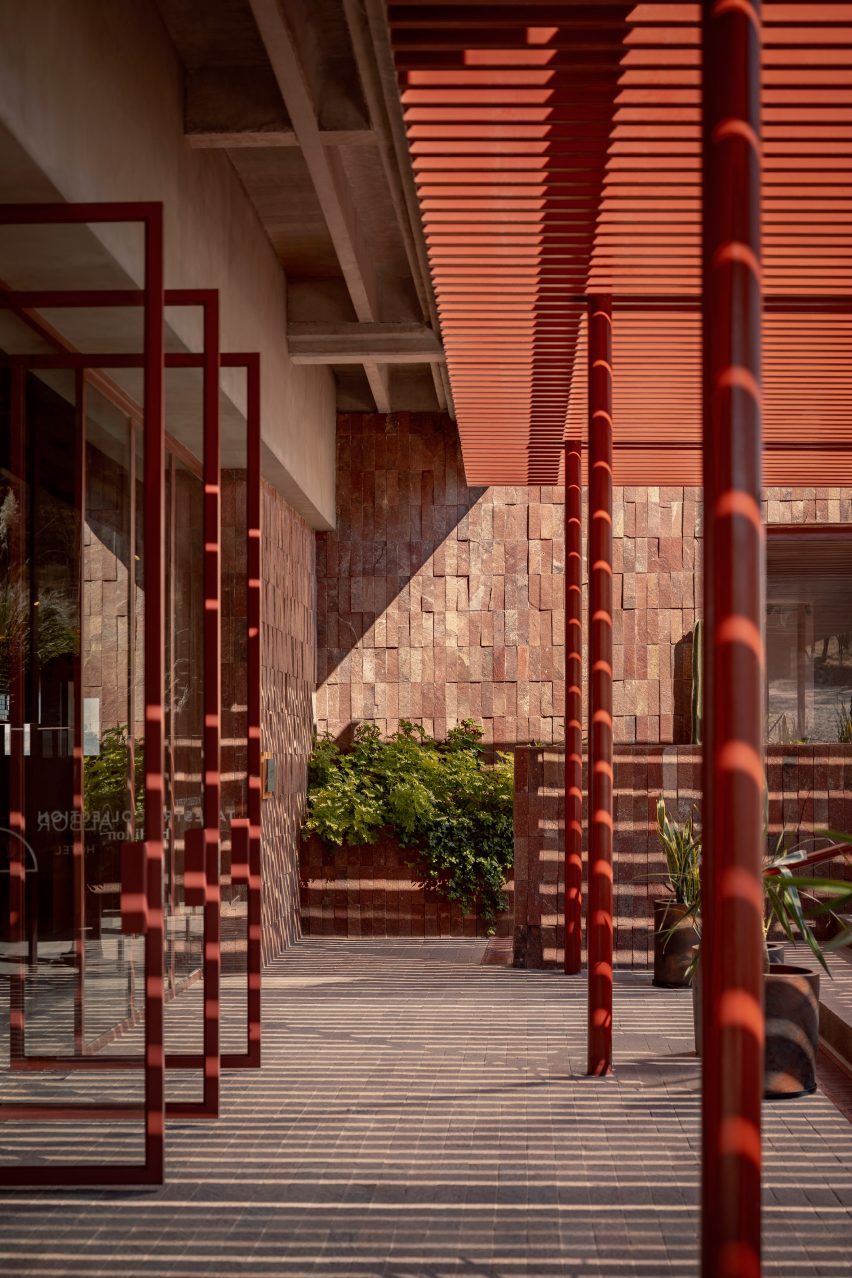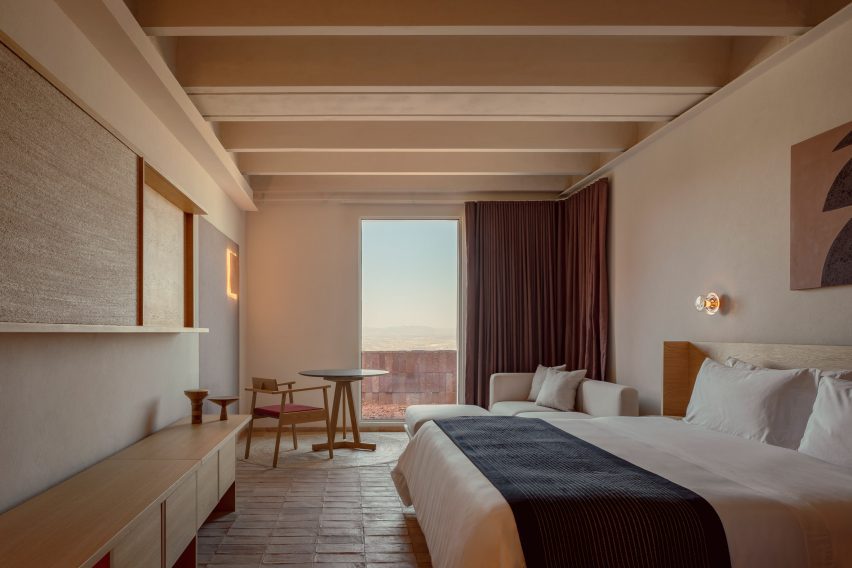Productora converts Mexico City textile factory into artist spaces
Mexican architecture studio Productora has restored a concrete industrial complex in Mexico City into a series of studios including its own office.
Productora has been gradually renovating the building, which was originally a textile factory built in the 1920s, since it moved its offices to the structure following an earthquake in 2017.
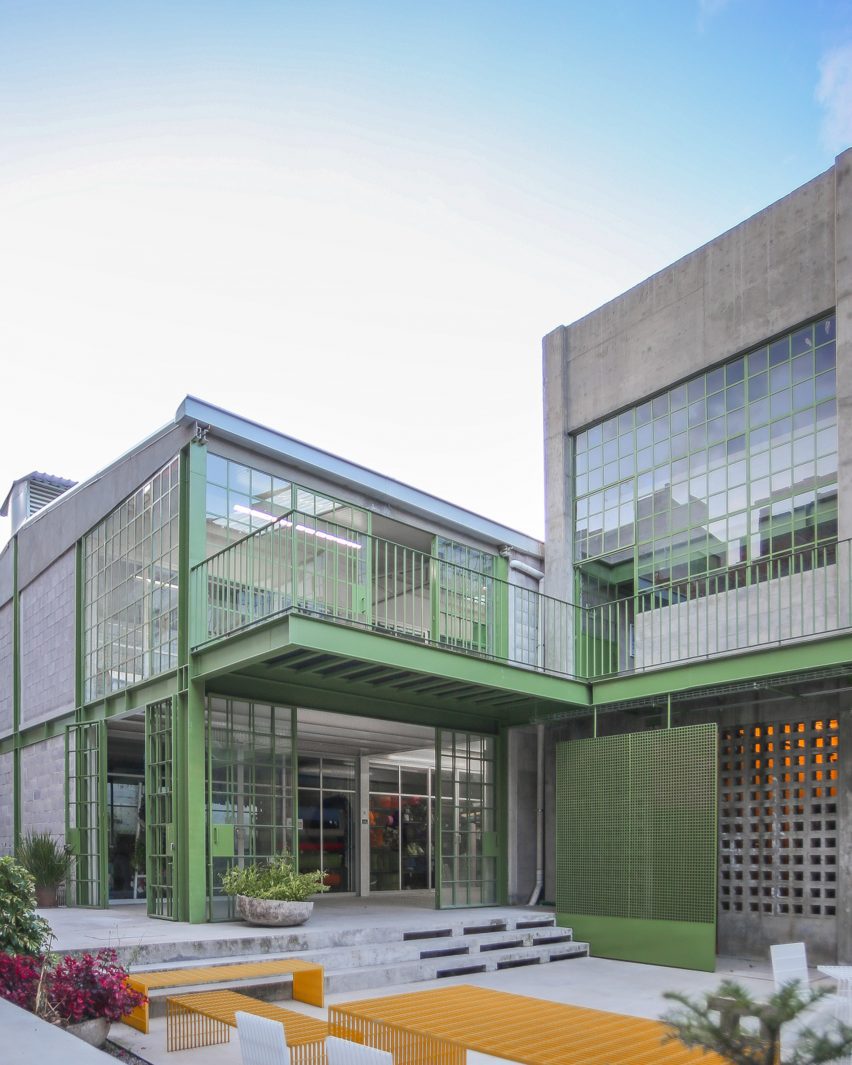
The studio originally took up residence in an empty “nave” in the factory in Mexico City’s Doctores neighbourhood along a furniture company.
Since then, the studio has been “slowly rebuilding the complex while inhabiting it” and more than twenty other companies have moved into the complex, which is now called Laguna,

For the renovation, the studio focused on the interior of the complex while leaving the street-facing, painted-concrete exterior, generally untouched so that one might not know the complex is there at all.
The complex is now orientated around two courtyards that were cleared of existing structures to create new circulation and gathering areas.
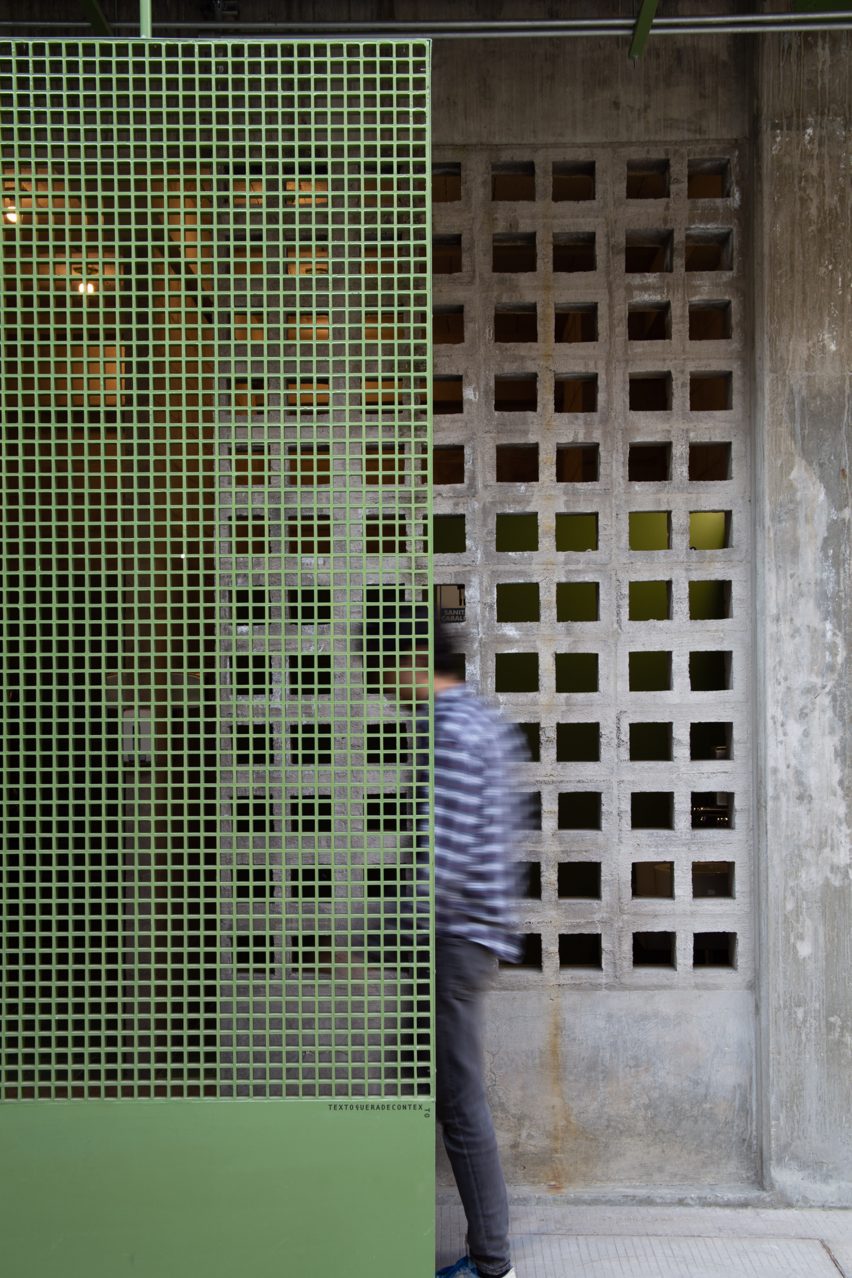
Within these courtyard spaces, a mix of newly built concrete workshops and the renovation of existing brick-and-mortar and concrete buildings will continue to take place over the next several years. The studio said it hopes that the project will be one of “constant adaptation and transformation”.
Now, the most significant aspects of the renovation have been the cleared courtyards and added buildings, as well as expressive walkways and a new freight elevator that towers above the site.
Green detailing was chosen because it was prominent in the trim of the windows and roof on the facade of the original structure, and these green details continue along the causeways and in the gridded window frames.
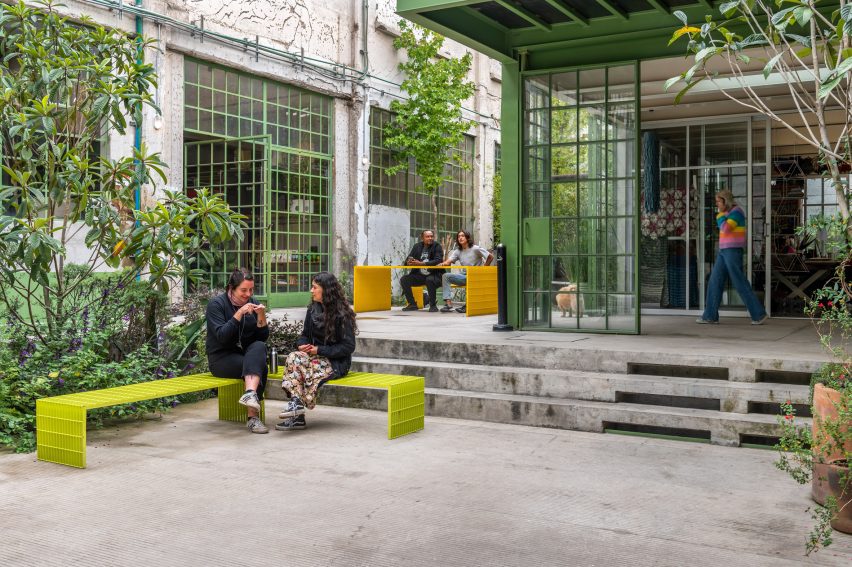
Social spaces have been installed in the courtyards so that members of the various companies can gather.
In the future, Productora plans to build wooden workshops on top of the preexisting structure to create flexible and modular extensions to the current program.
Jozz Gómez, a coordinator for Laguna, said that the presence of the complex has also positively changed the environment around the complex.
“It started to bring more employment, but also changed the neighbourhood,” she told Dezeen.
“It was known to be a very dangerous neighbourhood, but after the project started, you can see foreigners, students, and young people walking around the streets.”
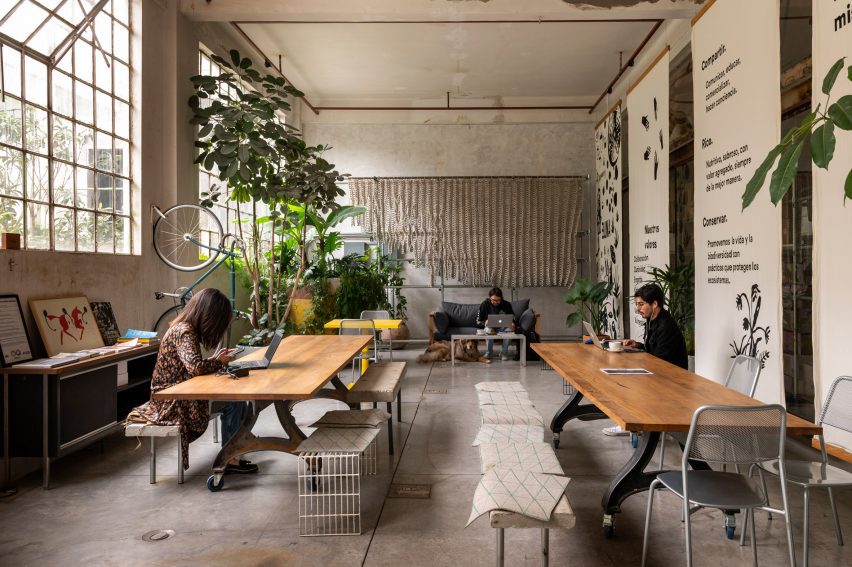
Productora was founded in 2006 and has additional offices in Brooklyn. Recent projects include a hotel in San Miguel de Allende clad in red and green tile as well as a bright-blue cohousing project in Denver, Colorado, USA.
The photography is by Pablo Manjarrez. Top photo by Camila Cossio.

